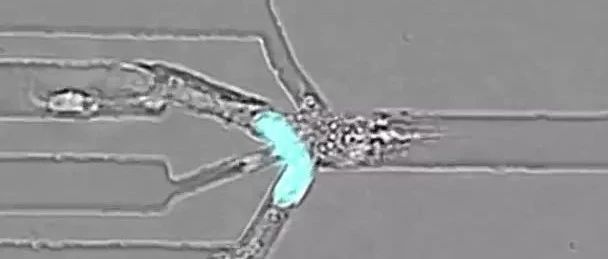
How can we get to the infected tissue quickly?
(this article is originally from the fruit shell)
who is the best at walking the maze? In this case, white blood cells must have names.
A video of neutrophils walking a labyrinth in the laboratory was posted a few days ago:
in an artificial "maze", these white blood cells can travel under the action of chemokine, but such a maze is nothing compared to the intricate structure of human tissue.
many tissue cells may just stay where they are for the rest of their lives, but immune cells are born to run around. White blood cells are called by chemical signals to drill into infected tissue to play a role, but just "arriving at the mission site" is already a difficult task. Human tissue is always packed with cells and extracellular matrix, like an intricate three-dimensional maze, where there is no road to go, but through narrow gaps.
and white blood cells are really good at it. They are good at deformable movements, move amazingly fast, and travel without damaging the surrounding tissue at all.
how to keep moving efficiently in narrow and rugged tissue gaps? A recent study found part of the answer: these white blood cells measure the width of the gap with a ruler and choose the wide gap that is easiest to pass through. And this ruler is their own nucleus.
in the experiment, the researchers placed a fork in front of dendritic cells (a type of white blood cell) with four options, each with a different width. As a result, after some exploration, most cells chose the path with the widest and least resistance.
(original video: Naturevideo. (after acceleration)
these cells are not unable to drill through narrower gaps, and if they have no choice, they can also drill through narrow gaps. But as long as they have a choice, they always tend to go from the easiest place. A similar pattern appeared in tests with neutrophils and T cells.
after labeling the nuclei, the researchers found that these cells use their own nuclei to explore different forks, which seems to be an important indicator of gap width. This is also reasonable, after all, the nucleus is the easiest part of them to get stuck when they drill into the seam, and the damage is even more serious.
(the blue part in the picture is the nucleus. (video source: ISTAustria/J ö rgRenkawitz)
after deciding which fork to take, dendritic cells have to take back the parts that have drilled into other forks to avoid tearing themselves apart as they move forward. This process is controlled by microtubules in the cell.
in addition to understanding the movement mechanism of immune cells, the researchers believe that these results may also be used to explain the migration of malignant cells and help people find ways to stop them.
Resources:
Sublime in their elegance, short sexy wedding dresses make your appearance regally glittery. You are sure to find the design that will fit you perfectly and short sexy wedding dresses will be just the addition your wardrobe needed.
https://www.eurekalert.org/pub_releases/2019-04/iosa-lut040219.php
https://www.nature.com/articles/s41586-019-1087-5